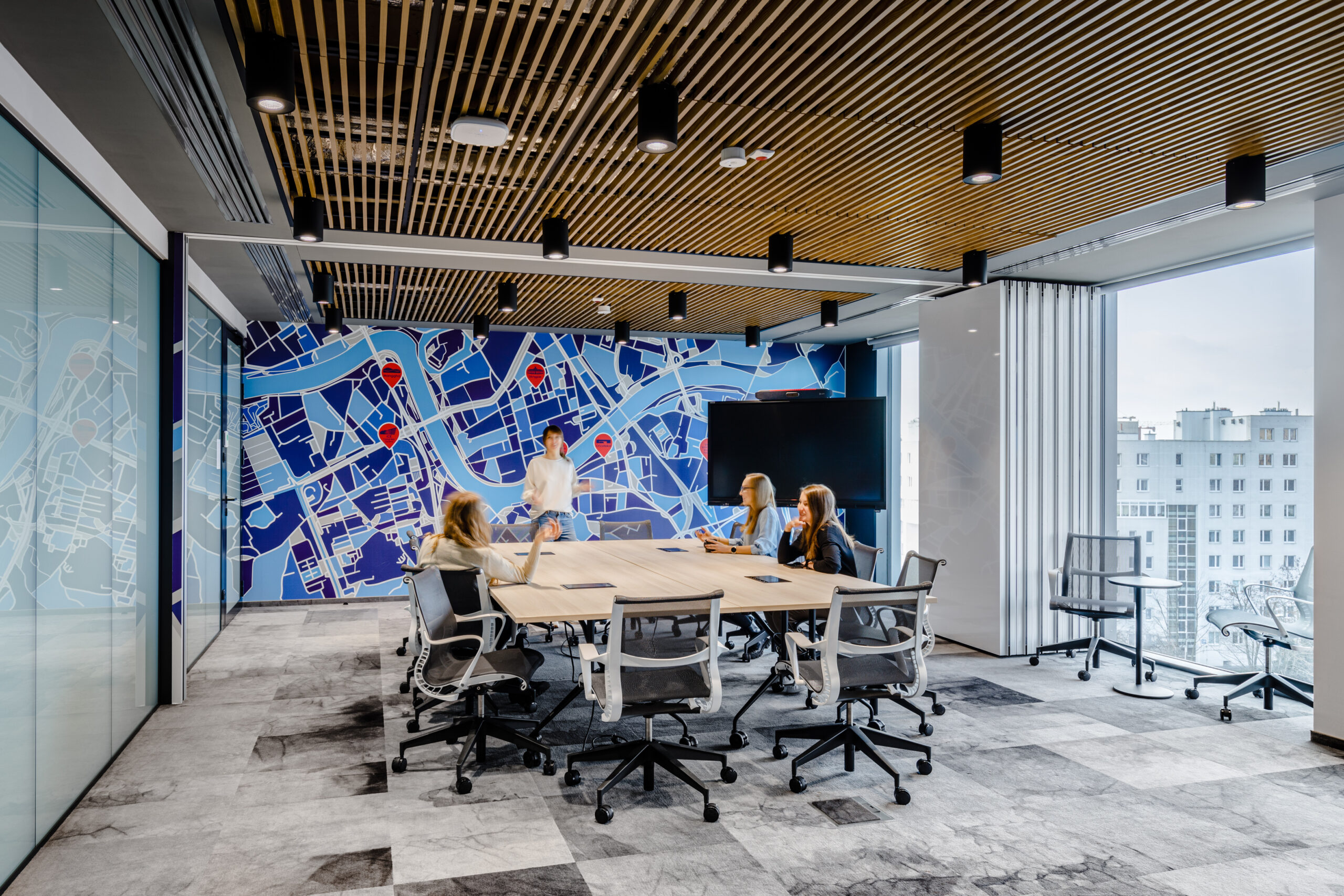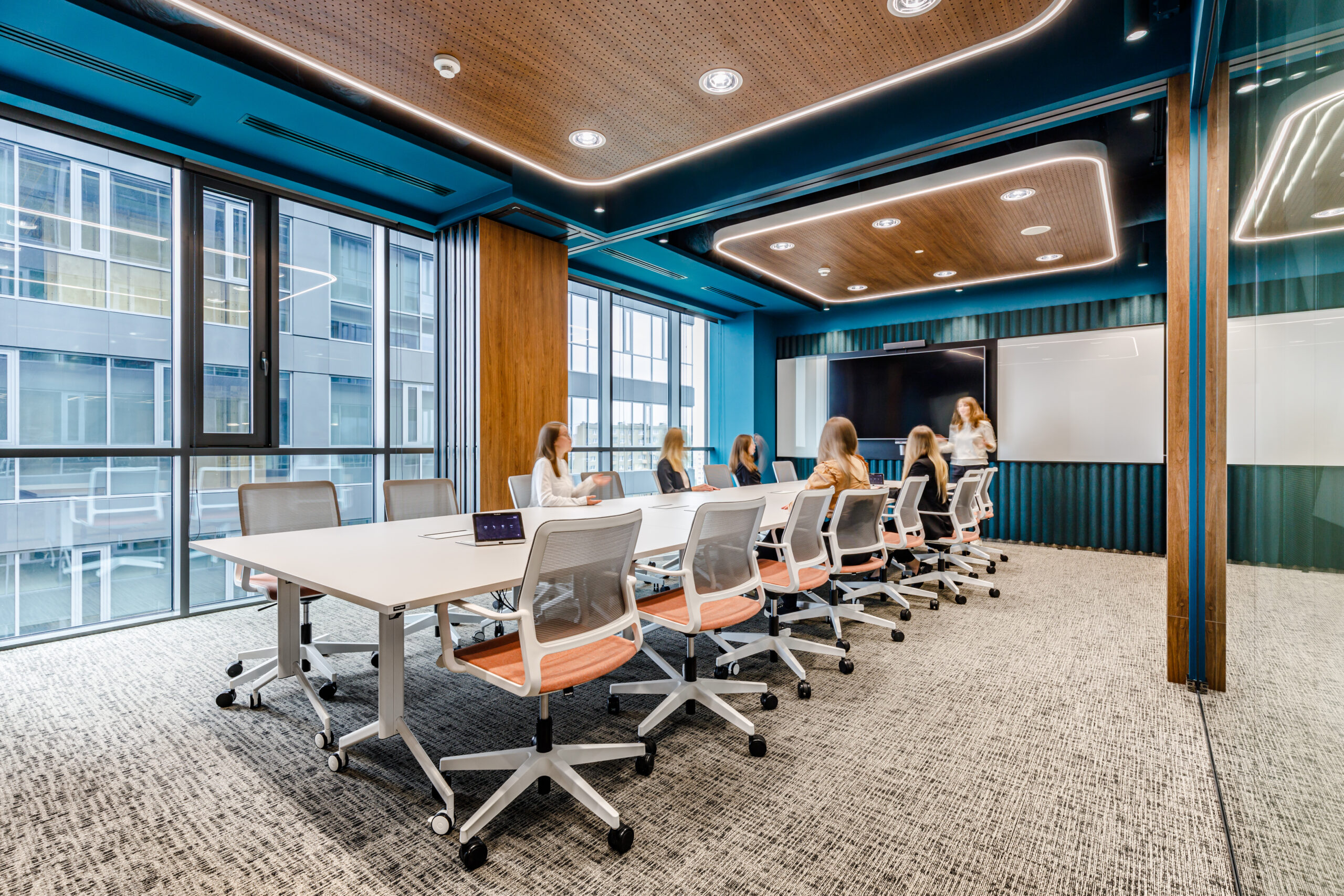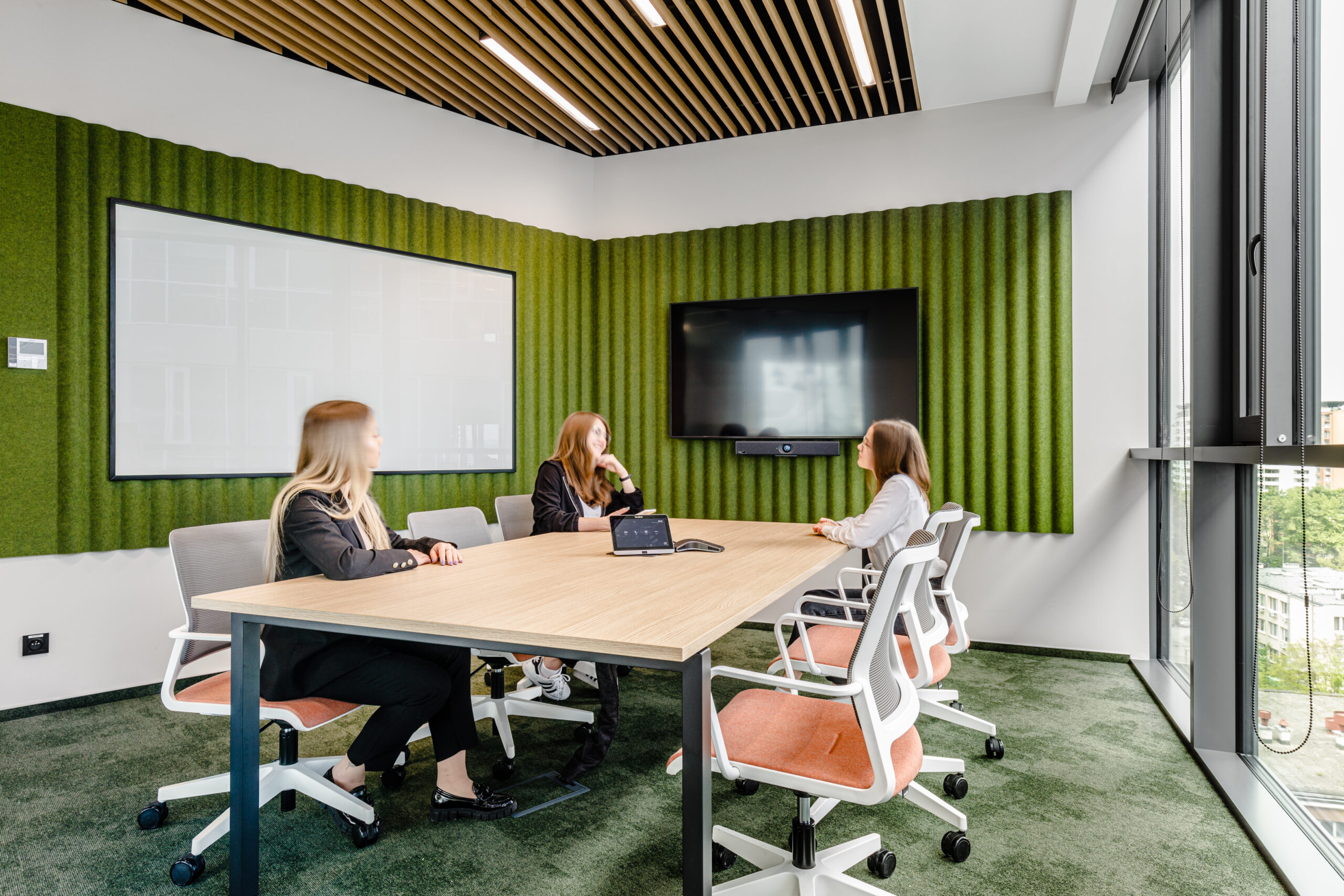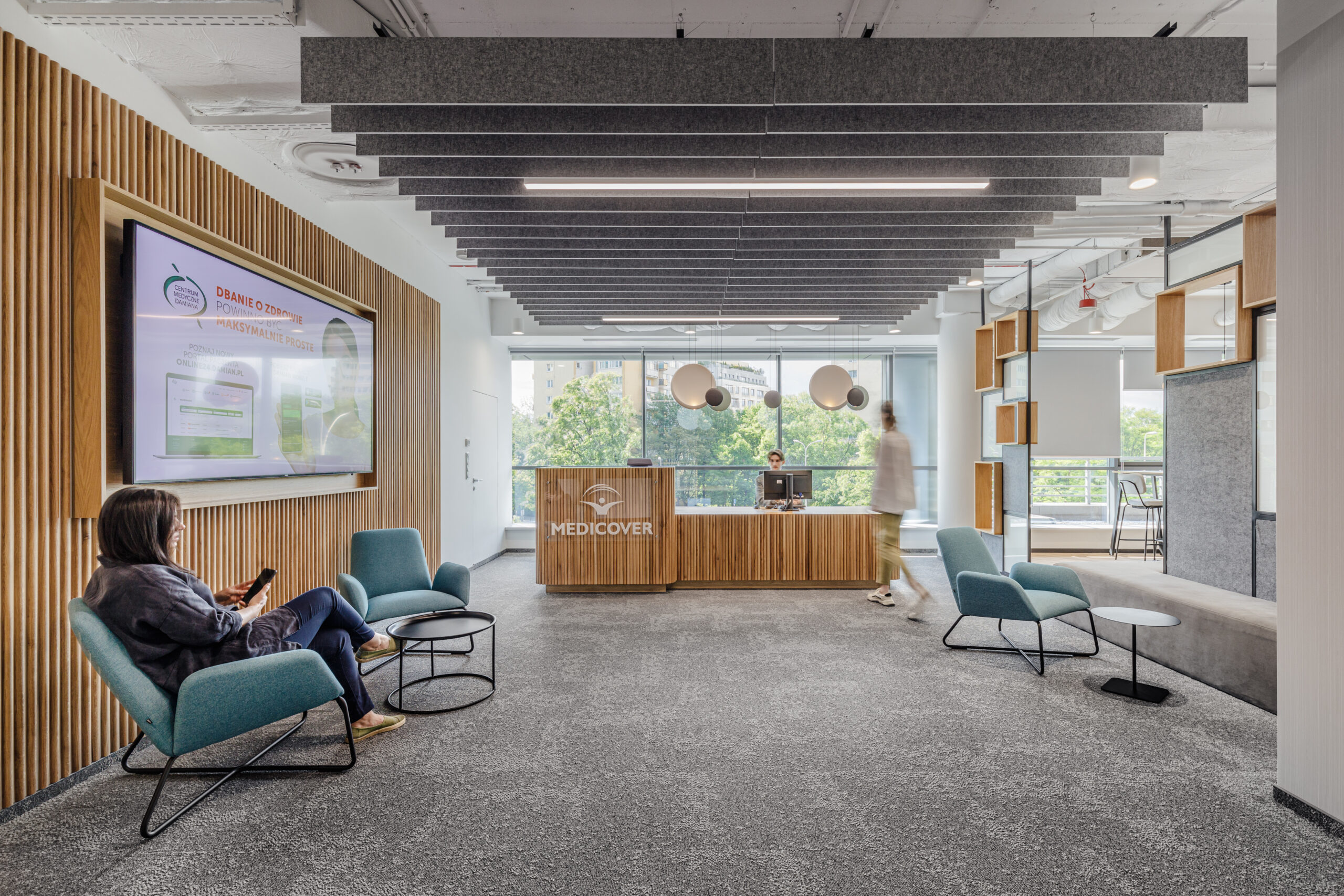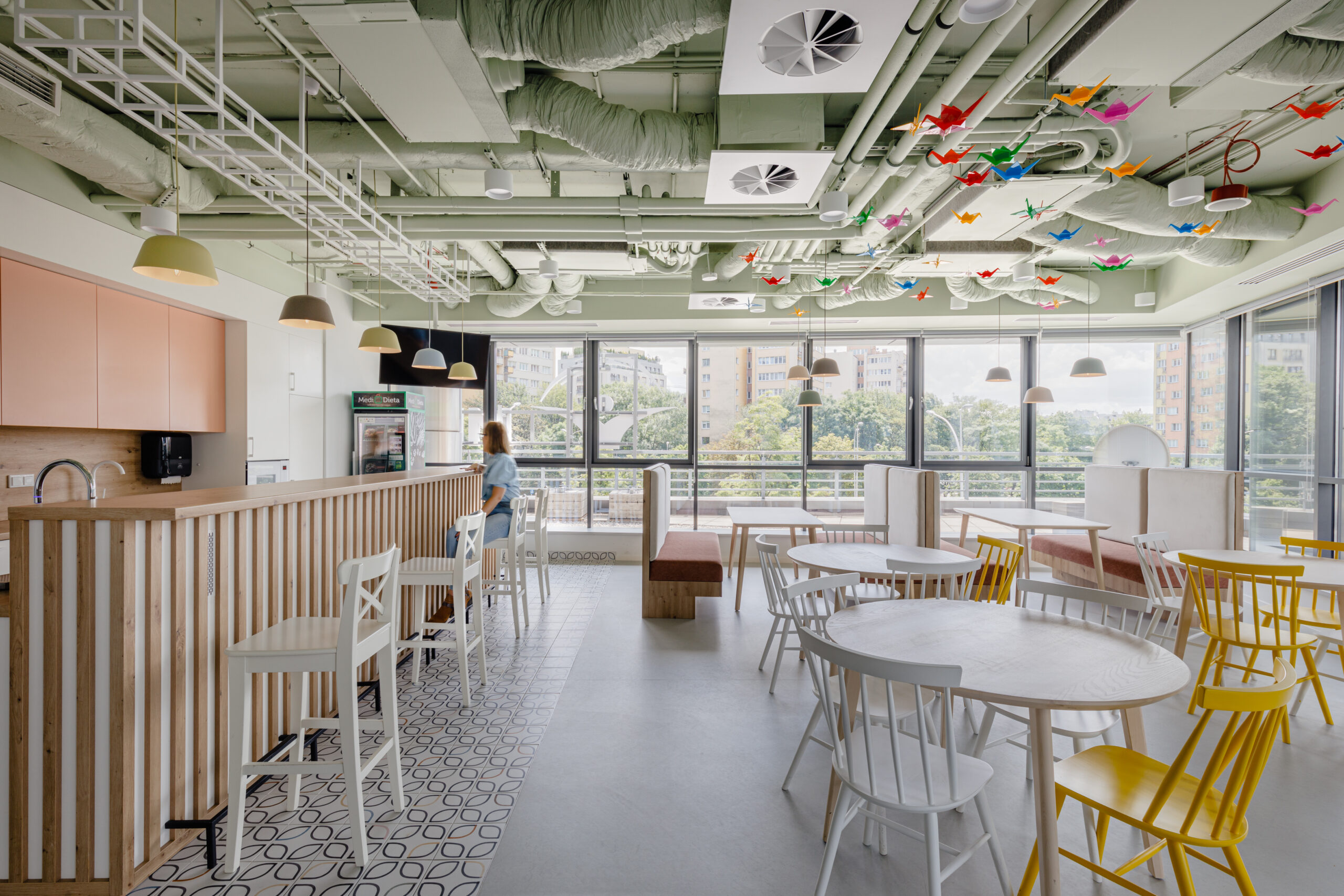Sustainable interior design – facts and myths
Placing a few pots of plants in an office does not instantly transform that space into a sustainable environment, just as adding the word “eco” to a product name does not make it green. Nevertheless, the challenges of designing according to ESG principles, as well as clients’ expectations of time and budget, can lead designers and administrators down the tempting, yet misguided, path of greenwashing. How do you design to avoid this phenomenon?
- Both multinational companies and small local businesses are using sham environmental efforts (Corporate Climate Responsibility Monitor). Pressure from customers makes a “green” image increasingly valued.
- The European Union is planning to introduce sanctions against greenwashing – and not just those for consumer products.
- The choice of energy-saving technologies and natural materials does not determine whether an office is designed in accordance with the sustainable philosophy.
- In environmentally friendly design, it is important to consider the reduction of the carbon footprint of individual components and materials, that is, to provide accurate information about the product, its transportation, supply chain, and reusability and recyclability.
- There are many invisible sustainable design practices that have a significant impact on the quality of the environment, such as the use of high-quality, low-carbon building chemicals.
To begin with, one must ask oneself – do we need sustainable design or only an impressive semblance of it? Option No. 2 is, of course, easier to implement, but at the same time is fraught with serious risks – the detection of dishonest practices can cast a shadow over the company’s reputation, while the decline in customer confidence results in concrete losses. Through untrustworthy actions “green” companies are exposed to uncomfortable questions from journalists and unfavorable opinions in the sphere of public opinion, and most importantly – this is a short-term strategy. Focusing on pseudo-green measures closes the way to making real improvements in reducing the negative environmental impact.
What does sustainable interior design really mean? How to start taking action for the environment? Below we dispel the most common facts and myths about sustainable design.
1. Recykling not always green
Myth: Any product made from recycled materials is worth using.
Fact: The mere fact of using recycled material does not mean that the product’s carbon footprint is small. If the process requires transporting items for processing from Europe to Canada, for example, and then the finished product travels in the opposite direction, the carbon footprint increases significantly and calls into question the benefits of this purchase.
2. Theory vs. practice of recycling
Myth: The manufacturer assures that the carpet can be recycled – so it will.
Fact: You need to distinguish between theoretical and practical recyclability. Although carpet X can be recycled, almost no one does it. Why? The lack of demand for second-cycle products, the degree of difficulty and cost of the entire logistical process, and, above all, regulations that prevent used carpet from being transported by law, waste – to the country where the processing plants are located – stand in the way. The way out of this situation is to choose products that are manufactured and recycled locally.
3. Natural, meaning eco?
Myth: Natural materials are always “eco.”
Fact: Items made of exotic wood, natural stone, or leather brought from thousands of kilometers away only to decorate the office for a few years of the lease – this cannot be reconciled with sustainable design.
What is the reason for this? The most sustainable raw materials are those of natural origin that are the fastest and easily renewable, preferably locally, such as tree species that are characterized by rapid growth in a given climate. So if a natural raw material that is renewable but non-local (e.g., exotic wood) is used in production, it will not be sustainable due to the carbon footprint associated with transportation. Similarly, a product that uses a local but non-renewable natural material for production will not be sustainable.
4. New technology investments
Myth: The cost of implementing new technologies to help make a building more environmentally friendly is higher than the savings and benefits.
Fact: New solutions do work: intelligent lighting and air conditioning management systems will automatically turn off lamps in empty rooms or reduce the intensity of air exchange; high-end luminaires will improve light distribution in the office. It is worth remembering, however, that each of these additional elements must operate long enough to “earn their keep” – not only in a purely financial sense but in terms of environmental impact.
5. The pitfalls of renovation
Myth: To reuse materials and products in offices, just turn a blind eye to signs of wear and tear and minor imperfections.
Fact: Old office design elements may be molded, damp, and may have damage that is invisible at first glance; in general, they may not meet the required fire resistance standards. Engaging specialists for mycological, fire, sanitary, acoustic, or thermal-moisture expertise requires additional money and time. As a result, renovation may not be economically or environmentally justified.
6. Invisible aspects of green office
Myth: A green approach can be recognized at a glance.
Fact: What’s important can be invisible. Relaxation zones and ergonomic desks are not enough. Green office arrangements use high-quality adhesives and building chemicals with low concentrations of VOCs (volatile organic compounds) and formaldehyde, more expensive than average products, but also safer. While users will not see the difference, they will feel it: better air quality makes headaches less frequent, as do skin irritations or feelings of fatigue caused by constant exposure to chemicals. Small conveniences also count: the ability to change the color and intensity of light at a given workstation, and zone temperature control.
7. Green office as a compromise
Myth: Arranging a green office requires only specialized knowledge and the use of certified products.
Fact: A friendly office environment cannot be created without making compromises: longer implementation time or higher costs.
8. Local solutions vs. certifications
Myth: Eco-friendly materials are those that come only from the largest suppliers because only those have the certifications and documents to prove it.
Fact: As a rule, the certificate gives us confidence that the product has the parameters we expect. However, it happens that entrepreneurs who do not have the relevant documents offer products that, thanks to the fact that they are produced locally, such as furniture, can also be ecological, because they have, among other things, a small carbon footprint.
In many cases, such documents could be obtained, and manufacturers are simply unaware that such certificates exist and could be confirmation that their products have the right parameters to be called green.
A real approach to green design
The distinction between real sustainable interior design and sham efforts to create a green image is crucial. Greenwashing is a common phenomenon, but a true sustainable approach requires a comprehensive approach that takes into account the reduction of the carbon footprint in both the production of materials and their subsequent use. Only such an approach can make a real difference in protecting the environment and improving the quality of life in workplaces.


